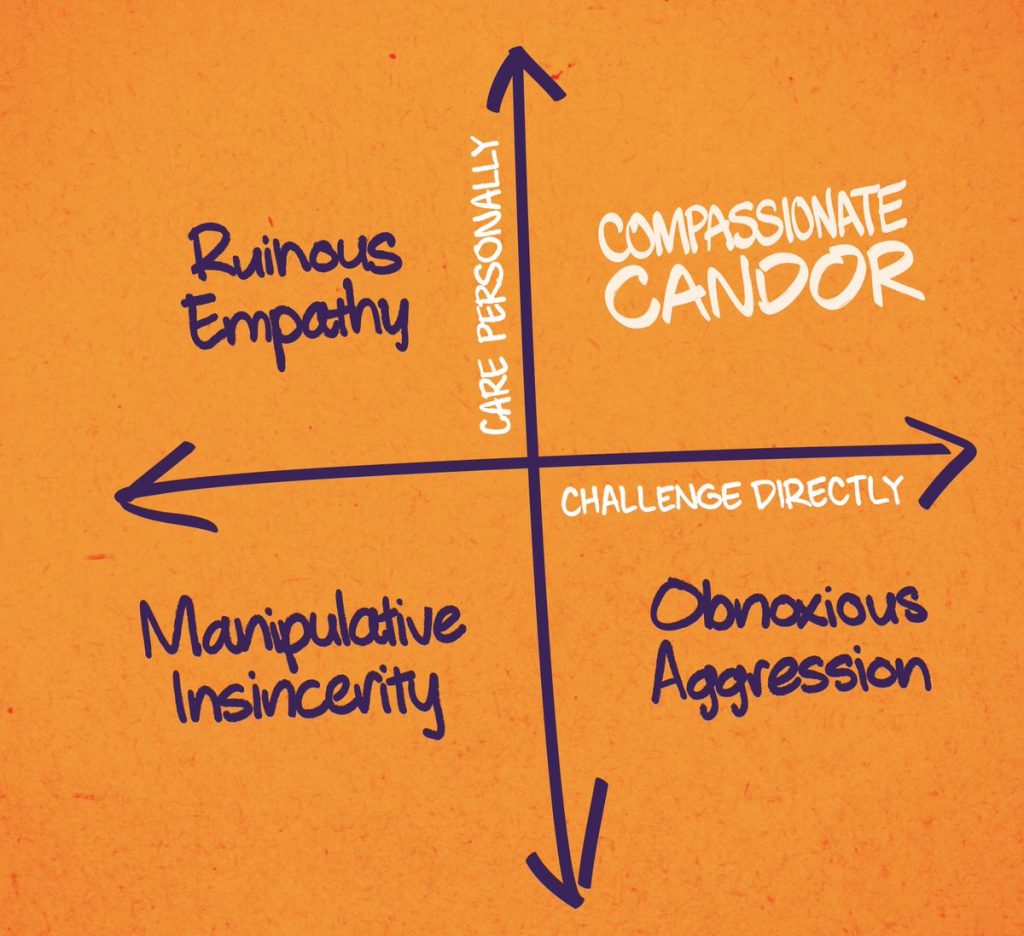By Gaurav Sharma, founder and CEO of Attrock, a results-driven digital marketing company he grew…
6 Ways to Radically Improve Communication in the Workplace
By Rob Press, a content marketing manager at Deputy, a robust scheduling software. Aside from helping businesses reach operational efficiency, he keeps up to date with the latest trends in SaaS, B2B, and technology in general.
Picture this: a team meeting where ideas are flying, but not all voices are being heard. Amidst the energetic discussion, Sarah, a quiet but insightful team member, hesitates to share her innovative idea amid all of the chatter. Frustrated, she considers asking her manager for ways to improve communication in the workplace among the team members.
This scenario is not uncommon in modern business where effective communication is the key to unlocking hidden potential.
Want to improve workplace communication? Let's talk!

In her upcoming book Radical Respect, Kim Scott shares this example:
“Frank Yeary, a senior finance executive at Citigroup who led his firm’s early diversity and inclusion efforts, explained to me how he noticed this playing out destructively. He remarked that though women tended to come to meetings better prepared than men, a few of the men did most of the talking, often speaking over the women. This was not only bad for the women’s careers, he explained, it was bad for decision-making at the bank. The best-prepared people in the room were silenced.”
Managers and team leaders, it’s vital for your success that you recognize the importance of communication and every Sarah on your team.
Our goal is to give you the tools to foster a culture of open, effective, and empathetic workplace communication, paving the way for a more dynamic, inclusive, and productive workplace culture.
1. Cultivate Psychological Safety to Improve Workplace Communication
When trying to improve team performance, creating this safe space is a must. It doesn’t happen quickly, though; it takes time and effort.
One effective way to build trust with your team is by modeling Radical Candor. Show, don’t tell, your team that you’re committed to workplace communication that’s kind, clear, specific, and sincere. If you’re not sure how to get started, use this Radical Candor Order of Operations Quick-start Guide.
Remember, when team members trust each other, they communicate more openly and effectively, leading to a more cohesive and productive team.
Anonymous feedback systems provide a safe avenue for those who might be reluctant to voice their opinions openly. This approach ensures that all team members, regardless of their comfort level in direct communication, have a voice in the decision-making process. Radical Candor uses anonymous monthly surveys to collect feedback from everyone on the team.
Maintaining psychological safety requires personalized attention — regular one-on-one meetings offer a private and focused setting for employees to share their thoughts and concerns. These check-ins are essential for leaders to understand each team member’s unique perspective and comfort level in contributing to group discussions.
2. Improve Workplace Communication With Active Listening Techniques

Active listening involves listening with the intent to understand and then echoing the speaker’s message back to them to ensure you’ve heard them correctly. Practicing active listening ensures that speakers feel heard and understood while also enhancing the listener’s empathy and comprehension.
A practical strategy to implement active listening in team meetings is encouraging members to summarize others’ statements before responding. Summarizing ensures attentive listening and gives speakers the confidence that their message is accurately received. The practice improves communication quality and builds a sense of respect and validation within the team.
Not everyone may naturally excel at active listening, hence the importance of training sessions focused on this skill. Training should cover active listening fundamentals, the significance of non-verbal cues, and the skill of accurately reflecting what has been heard. Investing in these areas shows a commitment to nurturing a team proficient in technical and interpersonal communication skills.
Establishing a workplace culture that values active listening and asking clarifying questions ensures communication is not just about information exchange but about achieving mutual comprehension.
A culture that normalizes seeking clarity reduces misinterpretation and communication-related errors. It also indicates to the team that seeking clarification is responsible communication — building a foundation of trust and respect, which is the bedrock of any high-performing team. It’s also one of the most rewarding ways to improve communication in the workplace.
3. How to Improve Communication in the Workplace With Technology

Technological tools play a crucial role in bridging communication gaps and improving workplace communication, particularly in remote or hybrid settings. Tools like HR onboarding software, conferencing and messaging software, and collaborative platforms enable teams to stay connected regardless of their physical location. What’s more, they are one of the easiest ways to improve communication in the workplace.
Collaboration tools such as Slack and Microsoft Teams are essential for day-to-day communication in modern workplaces. They provide a digital space where team members can engage in both formal and informal interactions. These platforms offer various features like chat rooms, direct messaging, and file sharing, which facilitate easy and efficient communication.
Regular virtual coffee breaks or informal catch-ups are important for maintaining connections in remote work setups. These informal gatherings allow team members to engage in casual conversations, which helps build stronger personal relationships and a sense of belonging. Encouraging these casual interactions alongside formal meetings ensures a well-rounded communication approach, keeping the team connected on both professional and personal levels.
Project management tools provide a clear overview of tasks, deadlines, and progress, which enhances transparency and accountability. They help streamline workflows, improve communication (especially on cross-functional teams), and ensure that all team members are aware of their responsibilities and the overall project status.
Project management tools are key to effective team coordination and help prevent communication breakdowns, keeping projects on track and teams well-informed.
4. Foster a Feedback-Rich Culture to Improve Communication Skills at Work

A feedback-rich environment provides valuable insights into performance, highlights areas for development, and reinforces positive behaviors. It creates a dynamic environment where learning and adaptation are continuous processes.
Implementing a structured feedback process — including regular performance reviews and real-time feedback mechanisms — is crucial for creating a culture of feedback. Scheduled performance reviews provide a formal opportunity for comprehensive feedback, while real-time feedback (what Radical Candor author and co-founder Kim Scott calls the two-minute development conversation) offers immediate insights and guidance. This combination ensures that feedback is not only timely but also relevant.
Feedback workshops focused on giving and receiving feedback using the Radical Candor principles of Caring Personally and Challenging Directly teach employees how to provide feedback in a way that shows everyone how to repeat success and avoid repeating mistakes. Such training enhances the effectiveness of feedback exchanges and ensures that they are productive and positive experiences for all involved.
Peer-to-peer feedback sessions are another key strategy in fostering a feedback-rich culture and improving everyone’s communication skills in the workplace. These sessions allow team members to provide each other with valuable insights and perspectives, leading to a more interconnected team dynamic. Peer feedback can often highlight different aspects of performance and behavior that may not be apparent in manager-employee interactions.
5. Model Empathy, Compassion, and Emotional Intelligence

Empathy and emotional intelligence are key drivers of effective communication in the workplace. They involve understanding and managing one’s own emotions and the ability to empathize with others’ feelings — skills that help navigate complex interpersonal dynamics, foster deeper connections, and communicate more effectively.
However, it’s not enough to simply have empathy. You also have to take action to get to compassion (empathy + action = compassion), or as Gallup explains, turn the nouns “trust, hope, compassion, recognition, development” into verbs.
Emotional intelligence training is a proactive step that helps team members recognize their emotional responses, understand their impact on others, and develop strategies for effectively managing these emotions. Additionally, it equips them with the skills to recognize and appropriately respond to the emotions of their colleagues.
Leaders play a crucial role in setting the tone for empathy, compassion and emotional intelligence within a team. When leaders show understanding and consideration for the feelings and perspectives of team members, it fosters a culture of Radical Candor. This management style strengthens team relationships and encourages others to emulate these emotionally intelligent behaviors.
An environment where discussing and acknowledging emotions is normalized is crucial for developing emotional intelligence. This openness helps prevent misunderstandings and builds stronger, more empathetic connections among colleagues.
A workplace that values emotional expression and support is one where individuals feel valued and understood, which is fundamental for team cohesion, workplace communication, and overall job satisfaction.
6. Adapt Communication Styles to Improve Workplace Communication

As Kim says in Radical Candor, your communication is not measured at your mouth but at the other person’s ear. Recognizing and respecting differences in communication styles is key to creating an inclusive and effective work environment.
Adaptability in communication not only helps in effectively conveying messages but also shows respect and appreciation for diversity.
Training on cultural competency and inclusive communication practices educates team members about different cultural norms, communication styles, and the importance of inclusivity. It helps in breaking down barriers, reducing unconscious biases, and promoting understanding and respect among team members.
Encouraging team members to share their preferred communication styles and adapting accordingly is a practical approach to fostering inclusivity. This allows for a better understanding of each other’s preferences and needs, leading to more effective and respectful interactions.
Recognizing and celebrating diverse festivals and observances is a meaningful way to promote cultural understanding and respect. Recognition can be a learning opportunity for the team and a chance to appreciate the richness of different cultures. Celebrating diversity in this way strengthens team bonds and creates a more welcoming and inclusive workplace.
Now that you know how to improve communication in the workplace, go forth and be radically candid!
@radicalcandorofficial Toxic workplace environment? Never heard of that 💁🏻♀️✨ Use Radical Candor to help you be the best boss without losing your humanity 🧡 #RadicalCandor #POV #GenZ #WorkplaceHumor #Boss ♬ Cute – Aurel Surya Lie
In Radical Candor, Kim reveals what happens when you put in the work to improve communication in the workplace to ensure everyone’s voice is heard.
“Sarah Teng, a recent college graduate on the AdSense team, came up with the idea of using programmable keyboards to create shortcuts for phrases or paragraphs they used over and over when communicating with customers. It seemed like a good idea, so the ideas team asked me to approve the budget to buy programmable keypads. I did as they asked, and this simple idea increased the global team’s efficiency by 133%.”
Imagine the untapped potential in your team, waiting to be unleashed once you learn how to improve communication in the workplace.
The journey to radically candid communication is ongoing, but with these tools in hand, you are now prepared to lead your team toward greater collaboration, innovation, and success. Your team’s next great idea is just a conversation away.
————————————————————————————————————————————————————————————–
*Rob Press is a content marketing manager at Deputy, a robust scheduling software that can be used to manage your workforce in a wide variety of different industries. Aside from helping businesses reach operational efficiency, he keeps up to date with the latest trends in SaaS, B2B, and technology in general.
- Take the Radical Candor quiz >>
- Sign up for our Radical Candor email newsletter >>
- Listen to the Radical Candor podcast >>
- Shop the Radical Candor store >>
- Get Radical Candor coaching and consulting for your team >>
- Get Radical Candor coaching and consulting for your company >>
Wondering how to improve communication in the workplace? Then you need The Feedback Loop (think Groundhog Day meets The Office), a 5-episode workplace comedy series starring David Alan Grier that brings to life Radical Candor’s simple framework for navigating candid conversations.
We’re offering Radical Candor readers 10% off the self-paced e-course. Follow this link and enter the promo code FEEDBACK at checkout.



